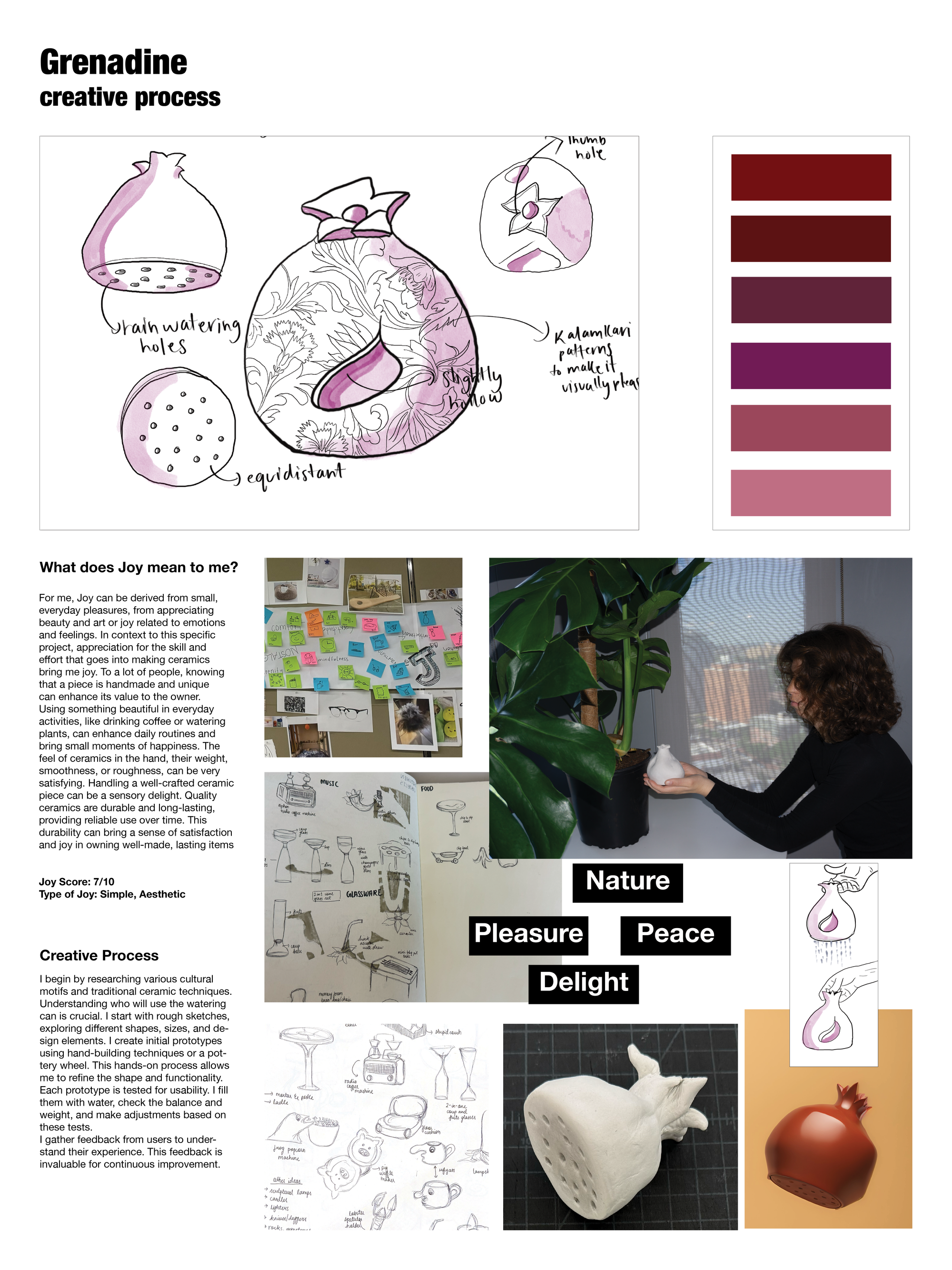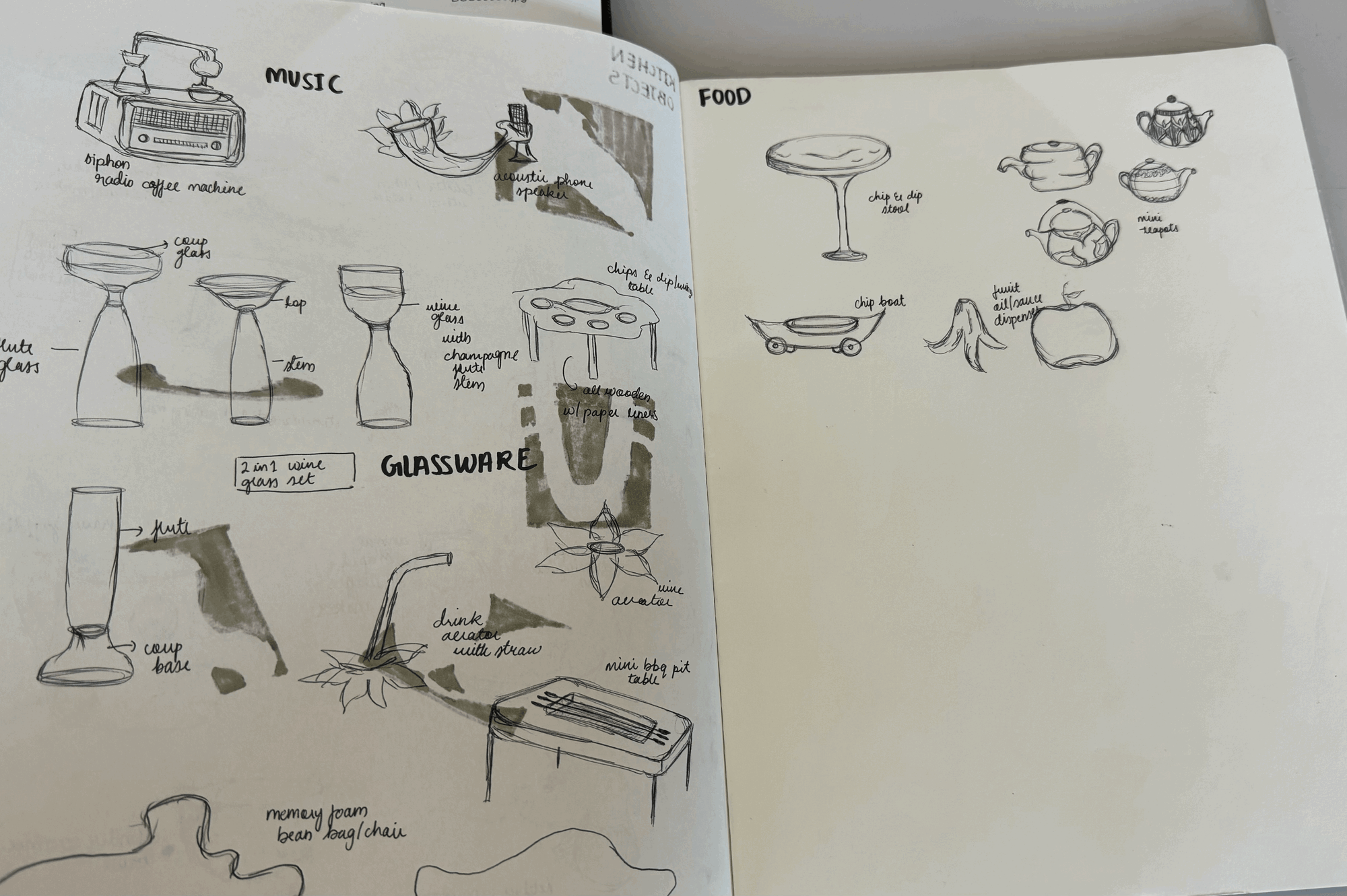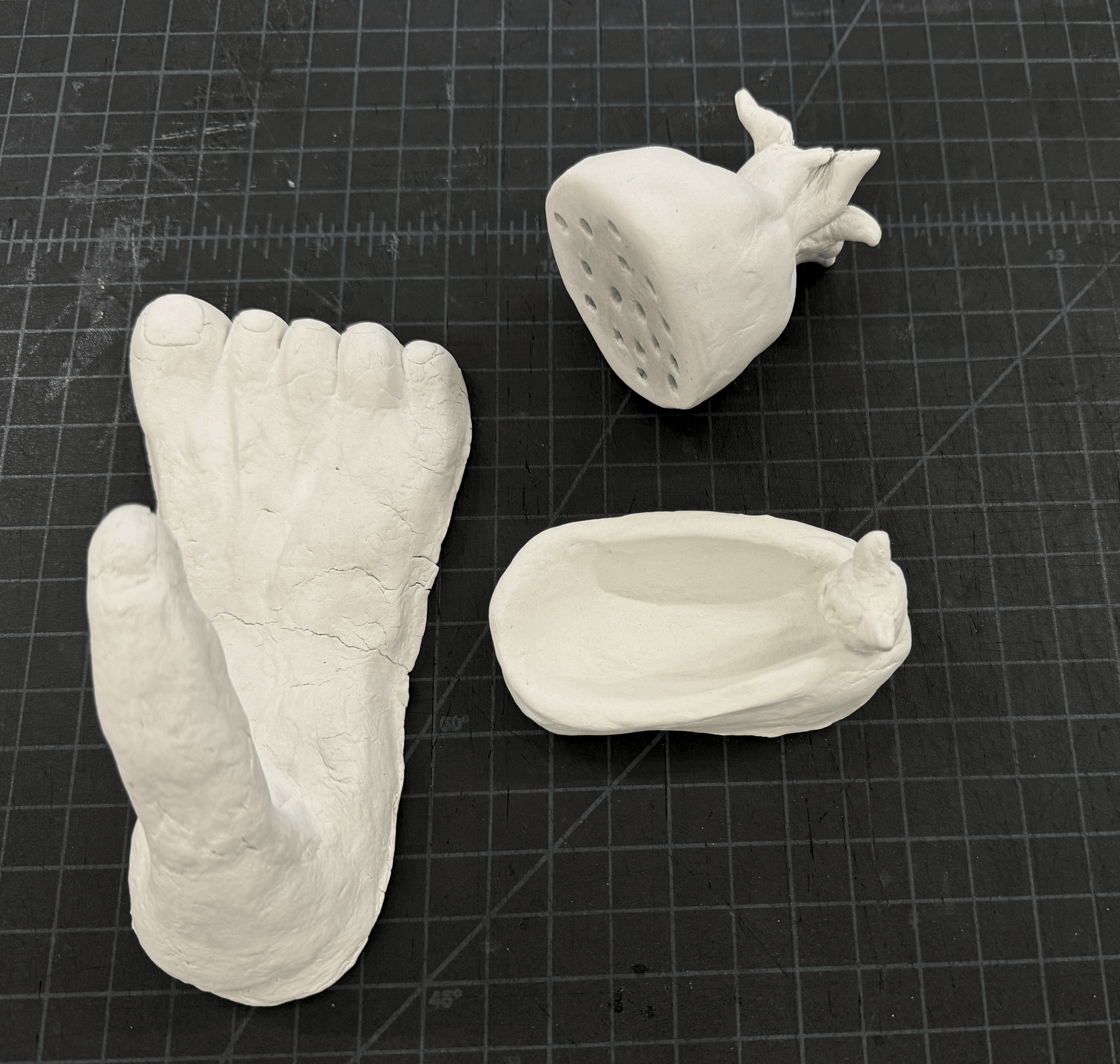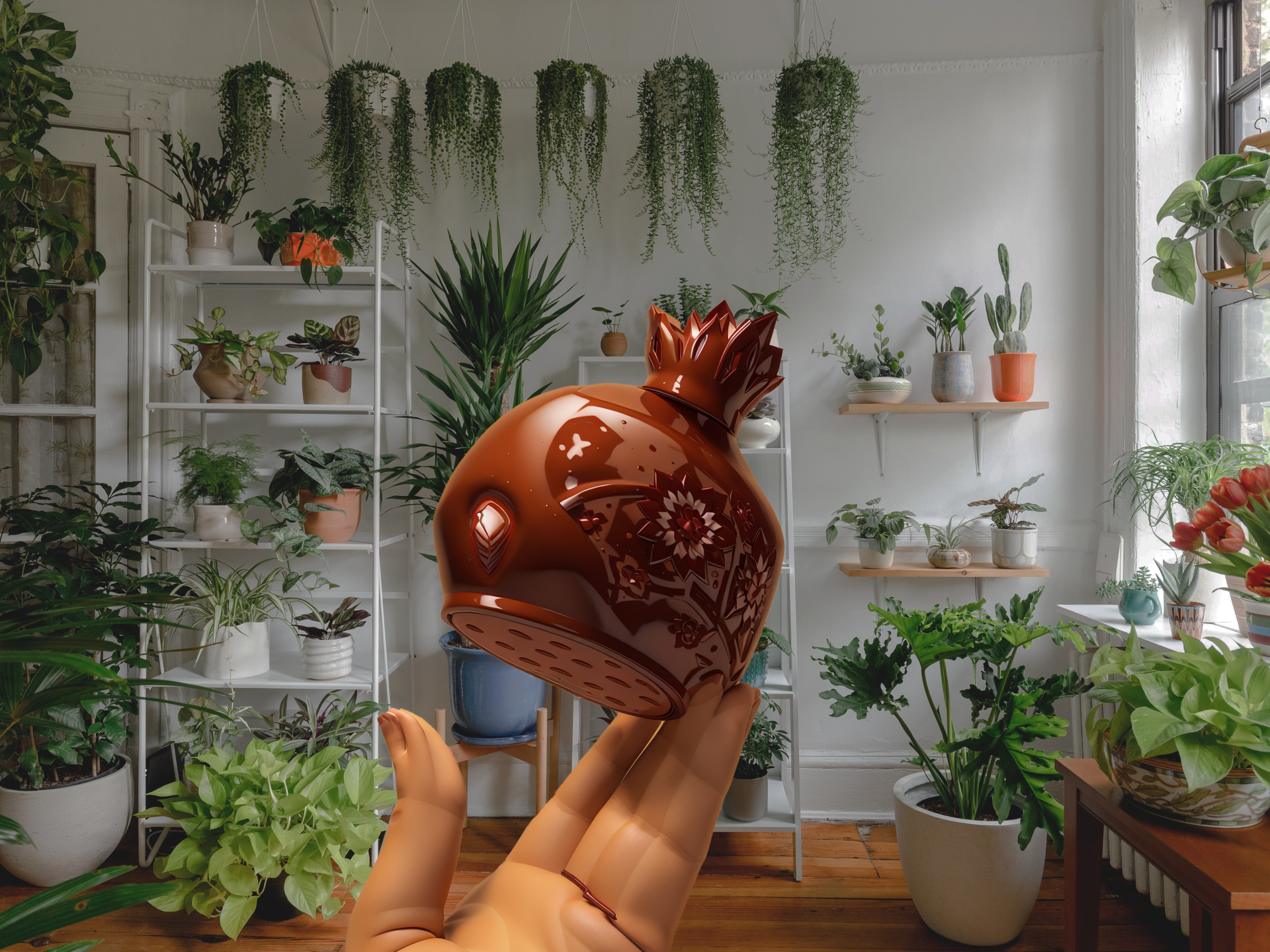Grenadine
Ceramic Thumb-Controlled Rain Watering Can
Design Brief
The objective of this project was to challenge students to conceive and create objects that evoke joy, delight, and positivity without being classified as traditional toys. Students will begin by exploring the concept of joy and identifying specific contexts or scenarios where joy can be enhanced through the use of designed objects. This could include everyday rituals, moments of relaxation, social interactions, or personal experiences. They will analyze existing products or designs that successfully evoke joy and extract key insights to inform their creations. Using brainstorming techniques, sketches, and prototypes, students will generate a range of ideas for their objects of joy.

Ai Render
The Product
Grenadine is a ceramic thumb-controlled rain watering can in the shape of a pomegranate and is a type of watering can designed to be operated using the thumb for precise control of the water flow. Typically, it features a mechanism where you press down or release pressure with your thumb to regulate the water flow rate. This design allows for easy and efficient watering, especially for delicate plants or seedlings that require gentle watering. The product combines traditional stoneware ceramic techniques with contemporary forms.

Functioning Prototype
Demo
Design Philosophy
I believe that beauty can enhance the user’s interaction with an object, making daily tasks more enjoyable and adding a sense of delight to ordinary moments. Balancing functionality and aesthetics in design is about creating objects that not only look good but also serve a meaningful purpose. By focusing on the key principles of simplicity, usability, and sustainability, you can create designs that are both practical and visually pleasing. It’s crucial for me that the design serves a purpose beyond mere visual appeal. At the same time, I’m passionate about creating objects that are aesthetically pleasing.


Final Poster
Creative Process
I begin by researching various cultural motifs and traditional ceramic techniques. Understanding who will use the watering can is crucial. I start with rough sketches, exploring different shapes, sizes, and design elements. I create initial prototypes using hand-building techniques or a pottery wheel. This hands-on process allows me to refine the shape and functionality. Each prototype is tested for usability. I fill them with water, check the balance and weight, and make adjustments based on these tests. I gather feedback from users to understand their experience. This feedback is invaluable for continuous improvement.







